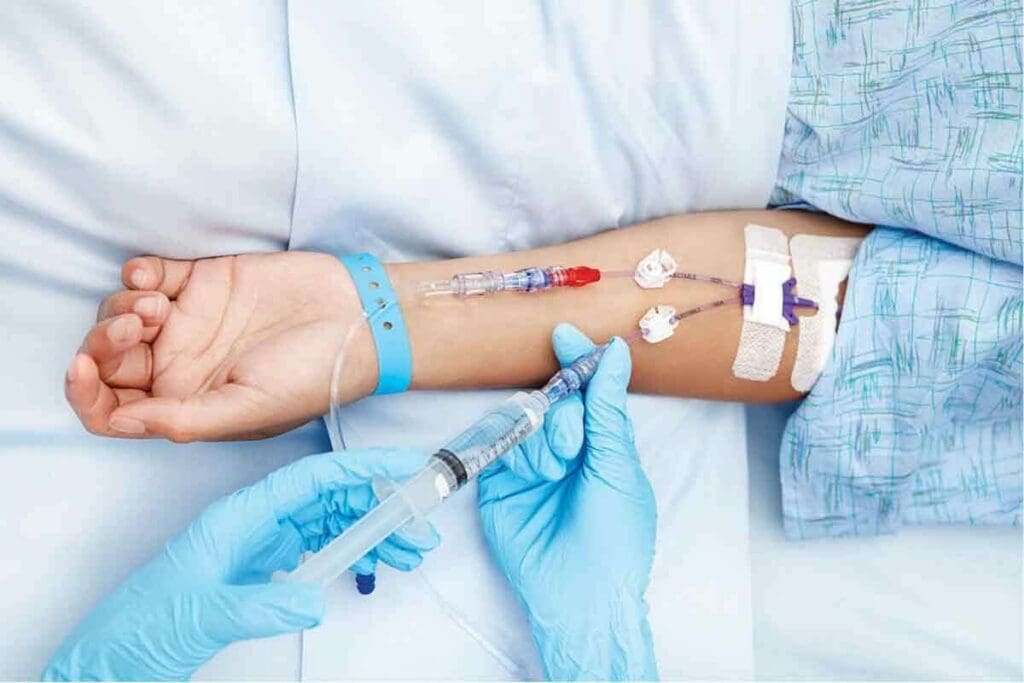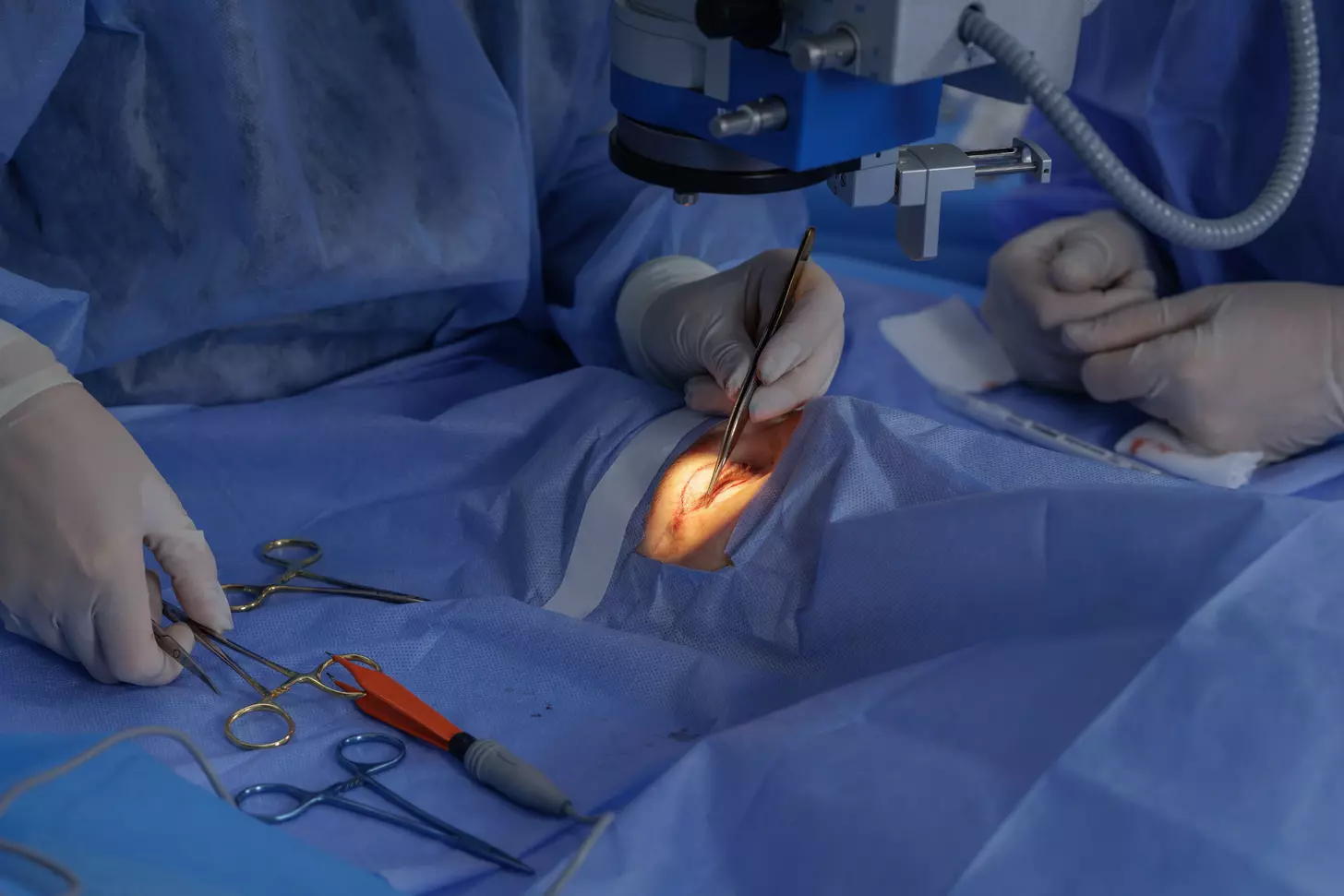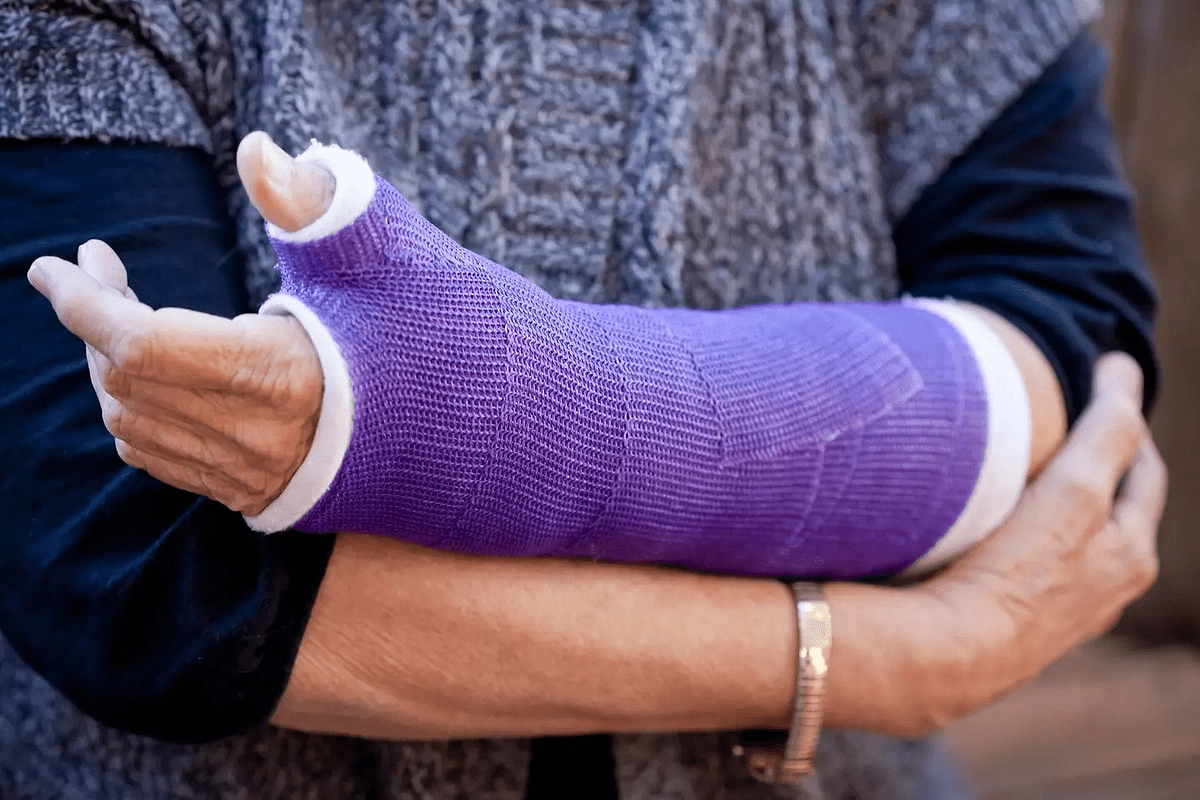Last Updated on November 27, 2025 by Bilal Hasdemir

At Liv Hospital, we know how tough a cancer diagnosis can be. Cancer treatment options vary, and it’s key to understand the differences between radiation and chemotherapy
Radiation and chemotherapy are two of the most common and effective cancer treatments. They work in different ways — radiation targets specific areas using high-energy rays, while chemotherapy uses drugs to attack cancer cells throughout the body.
Breast cancer remains a major concern for women worldwide. Knowing how radiation and chemotherapy work is vital for better cancer care. At Liv Hospital, we guide you through each step so you can make the right choice for your treatment and recovery.
Key Takeaways
- Chemotherapy and radiation therapy are two main cancer treatments.
- Each method has a unique approach and use.
- Knowing the differences is key for good cancer care.
- Liv Hospital offers full support for international patients.
- Custom treatment plans are important for cancer care.
Understanding Cancer Treatments

Cancer treatment has many options, each one tailored for different patients. These treatments have become more advanced, thanks to a better understanding of cancer.
Chemotherapy and radiation therapy are two main treatments. Chemotherapy uses drugs to target cancer cells in the body. Radiation therapy sends high-energy beams to tumors. Knowing how these treatments work is key for patients and their families.
The Role of Cancer Treatments in Modern Medicine
Cancer treatments have changed a lot, giving hope to people all over the world. Studies show that food and lifestyle choices can affect cancer risk. This shows the need for a complete approach to cancer care.
“The key to effective cancer treatment lies in understanding the unique characteristics of each patient’s cancer and tailoring the treatment approach.”
Today, cancer treatment aims to not just fight the disease but also manage side effects. We will look at the different treatments, like chemotherapy and radiation therapy, and how they help in cancer care.
Overview of Treatment Options
There are many cancer treatment options, including surgery, chemotherapy, radiation therapy, and immunotherapy. The right treatment depends on the cancer type, stage, and the patient’s health.
| Treatment Type | Description | Application |
| Chemotherapy | Uses drugs to target cancer cells | Various types of cancer |
| Radiation Therapy | Delivers high-energy beams to tumor sites | Localized tumors |
| Surgery | Removes tumors or cancerous tissues | Solid tumors |
It’s important to know about these treatments and how they are used. As we learn more about chemotherapy and radiation therapy, we must consider their benefits and challenges.
What is Chemotherapy?

Chemotherapy is a treatment that fights cancer cells all over the body. It uses drugs to kill cancer cells and ease symptoms. This treatment is a key part of cancer care.
Definition and Basic Principles
Chemotherapy uses chemicals to treat diseases, mainly cancer. It works by targeting and killing cancer cells. These drugs mess with the DNA or RNA of cancer cells, stopping them from growing and dying.
Chemotherapy is special because it goes all over the body. It finds cancer cells that have spread. This makes it a great choice for cancers that have moved or could spread.
How Chemotherapy Works
Chemotherapy drugs have different ways to fight cancer. Some damage DNA, while others stop cells from dividing. The right drug depends on the cancer type, stage, and the patient’s health.
Chemotherapy can be given in different ways. It can be given through veins, taken by mouth, or directly to the tumor. The method depends on the cancer and the treatment plan.
Types of Chemotherapy Drugs
There are many types of chemotherapy drugs. Each works in a unique way and is used for different cancers. Here are some main categories:
- Alkylating agents, which damage the DNA of cancer cells to prevent their reproduction.
- Antimetabolites, which interfere with the production of DNA and RNA, stopping cancer cell growth.
- Anthracyclines, a class of drugs that work by intercalating DNA strands, inhibiting DNA and RNA synthesis.
| Type of Chemotherapy Drug | Mechanism of Action | Examples |
| Alkylating Agents | Damage DNA to prevent cancer cell reproduction | Cyclophosphamide, Chlorambucil |
| Antimetabolites | Interfere with DNA and RNA production | 5-Fluorouracil, Methotrexate |
| Anthracyclines | Intercalate DNA strands to inhibit DNA and RNA synthesis | Doxorubicin, Epirubicin |
“Chemotherapy is a critical component of cancer treatment, providing hope and healing to patients worldwide. Its ability to target cancer cells systemically makes it a versatile and effective treatment option.” An Oncologist
Chemotherapy is often used with other treatments like radiation and surgery. The choice of chemotherapy depends on the cancer type, stage, and the patient’s health and wishes.
What is Radiation Therapy?
Radiation therapy is a treatment that sends radiation directly to tumors. It aims to kill cancer cells while protecting healthy tissue.
Definition and Basic Principles
Radiation therapy, or radiotherapy, uses high-energy particles or waves to fight cancer. These include X-rays, gamma rays, electron beams, or protons.
It damages the DNA of cancer cells, stopping them from growing and dividing.
How Radiation Therapy Works
Radiation therapy can be given from outside the body (external beam) or from inside (brachytherapy). The choice depends on the tumor’s type, size, and location, and the patient’s health.
Types of Radiation Therapy
There are several types of radiation therapy, including:
- External Beam Radiation Therapy (EBRT)
- Brachytherapy
- Stereotactic Body Radiation Therapy (SBRT)
- Intensity-Modulated Radiation Therapy (IMRT)
| Type of Radiation Therapy | Description | Common Applications |
| External Beam Radiation Therapy (EBRT) | Delivers radiation from outside the body | Various cancers, including breast, prostate, and lung cancer |
| Brachytherapy | Involves placing radioactive material inside or near the tumor | Prostate, cervical, and breast cancers |
| Stereotactic Body Radiation Therapy (SBRT) | Delivers precise, high-dose radiation in a few fractions | Early-stage lung cancer, liver cancer, and spinal tumors |
| Intensity-Modulated Radiation Therapy (IMRT) | Uses advanced technology to modulate radiation intensity | Complex tumors, such as those in the head and neck, prostate |
Fundamental Differences Between Radiation and Chemotherapy
It’s important to know the difference between radiation therapy and chemotherapy. Each has its own way of treating cancer. They are used in different ways.
Systemic vs. Localized Treatment
Chemotherapy works throughout the body. It uses drugs to kill cancer cells everywhere. This is because cancer can spread.
Radiation therapy, on the other hand, focuses on one area. It uses rays to kill cancer cells in that spot. This helps protect healthy tissues nearby.
“The choice between systemic and localized treatment depends on the type and stage of cancer, as well as the patient’s overall health.” An Oncologist
Delivery Methods and Procedures
Chemotherapy is given in different ways. It can be injected into a vein or taken by mouth. The body gets breaks between treatments.
Radiation therapy is given in two ways. It can come from outside the body or be placed inside the tumor. This is called brachytherapy.
| Treatment Characteristics | Chemotherapy | Radiation Therapy |
| Approach | Systemic | Localized |
| Delivery Method | Intravenous or Oral | External Beam or Brachytherapy |
| Application | Targets cancer cells throughout the body | Targets specific tumor sites |
Knowing these differences helps patients and doctors make better choices. It’s all about finding the right treatment for each person.
When is Chemotherapy Used?
Chemotherapy is a key part of cancer treatment. Knowing when to use it is important for effective care. It’s used for many types of cancer, mainly when they’ve spread or are advanced.
Cancer Types Best Treated with Chemotherapy
Chemotherapy is often chosen for cancers that have spread or are aggressive. It works well for cancers like leukemia, lymphoma, and testicular cancer. It’s also used for cancers that drugs can target, such as some breast and lung cancers.
The success of chemotherapy depends on the cancer type and how well it responds to the drugs. We choose chemotherapy for cancers that are likely to be helped by it.
Stages of Cancer and Chemotherapy Application
Chemotherapy is used at different cancer stages, based on treatment goals. It’s often a main treatment for advanced or spread cancers. Sometimes, it’s used before surgery to make tumors smaller.
We also combine chemotherapy with other treatments like radiation therapy. The choice to use chemotherapy depends on the cancer stage, the patient’s health, and the treatment’s benefits and risks.
Chemotherapy is a flexible treatment that can be tailored for each patient. By knowing when to use it, we can offer personalized care that improves cancer patient outcomes.
When is Radiation Therapy Used?
We use radiation therapy to target and destroy cancer cells in specific areas of the body. Advances in radiation therapy have made it a versatile and effective treatment option for many patients.
Radiation therapy is great for treating localized cancers or tumors that haven’t spread. It can be used alone or with other treatments, like chemotherapy, to get the best results.
Cancer Types Best Treated with Radiation
Certain types of cancer respond well to radiation therapy. These include:
- Early-stage cancers: Radiation can cure early-stage cancers, like some skin, cervix, prostate, and lung cancers.
- Tumors causing symptoms: Radiation can ease symptoms like pain, bleeding, or trouble swallowing caused by tumors.
- Cancers in sensitive areas: Radiation therapy is used for cancers in sensitive areas, like the brain or spinal cord, where surgery is too risky.
Stages of Cancer and Radiation Application
The cancer stage is key in deciding if radiation therapy is right. Radiation is often used in these situations:
- Early-stage disease: For some cancers, radiation is the main treatment, aiming for a cure.
- Post-surgery: Radiation may be used after surgery to kill any remaining cancer cells.
- Palliative care: In advanced stages, radiation can ease symptoms and improve life quality.
Understanding when radiation therapy is used helps patients make better choices about their treatment.
Side Effects and Management of Radiation and Chemotherapy
Cancer treatments like chemotherapy and radiation therapy can have big side effects. It’s important to know about these and how to deal with them. This helps patients live better during treatment.
Common Side Effects of Chemotherapy
Chemotherapy affects cells that grow fast. It can cause:
- Nausea and Vomiting: Antiemetic meds can help.
- Hair Loss: Hair usually grows back after treatment.
- Fatigue: Feeling very tired that doesn’t go away with rest.
- Increased Risk of Infection: White blood cell count goes down.
Common Side Effects of Radiation Therapy
Radiation therapy has its own side effects. These can change based on where the treatment is given. Common ones include:
- Skin Changes: Redness, irritation, or dryness in the treated area.
- Fatigue: Feeling very tired, like with chemotherapy.
- Hair Loss: Only in the treated area.
- Nausea and Vomiting: More common when treating the abdomen.
Managing Treatment Side Effects
It’s key to manage side effects to keep patients’ quality of life up. Ways to do this include:
| Side Effect | Management Strategy |
| Nausea and Vomiting | Antiemetic meds, eating small, frequent meals |
| Fatigue | Rest, gentle exercise, nutritional support |
| Hair Loss | Scalp cooling, gentle hair care, wigs or headscarves |
Good nutrition and lifestyle choices help with side effects. Eating well, staying hydrated, and managing stress are key. They help patients handle treatment better.
Combined Approaches: Chemoradiation Therapy
Chemoradiation therapy combines chemotherapy and radiation therapy to fight cancer. This method is key in treating many cancers. It offers a stronger approach than using one therapy alone.
Benefits of Combined Treatment
Chemoradiation therapy has many advantages. It uses chemotherapy and radiation therapy together. This way, cancer cells are targeted more effectively.
This approach can lead to better results. Tumors shrink more, and cancer spread is controlled better.
- Enhanced Tumor Control: Chemoradiation improves local tumor control. It combines chemotherapy’s effects with radiation’s DNA damage.
- Increased Survival Rates: Chemoradiation can increase survival rates in some cancers. This is compared to using one therapy alone.
- Reduced Risk of Recurrence: Chemoradiation addresses both local and systemic disease. This reduces the risk of cancer coming back.
When Chemoradiation is Recommended
Chemoradiation therapy is suggested for cancers needing both systemic and localized treatment. The choice depends on the cancer type, stage, and the patient’s health.
- Cancers that are locally advanced or have a high risk of spreading.
- Tumors that are not easily removed or need shrinking before surgery.
- Cancer types known to respond well to both treatments, like head and neck cancers, esophageal cancer, and cervical cancer.
Understanding chemoradiation therapy helps tailor treatments to each patient. This improves cancer care and patient outcomes.
Patient Experience and Decision-Making
Choosing the right cancer treatment is a big decision. It’s important to know the differences between chemotherapy and radiation therapy. Patients need to think about many things when picking between these two main treatments.
Factors to Consider When Choosing Treatments
Several things affect the choice between chemotherapy and radiation therapy. These include the cancer type and stage, overall health, and personal preferences. We help patients weigh these factors to find the best treatment plan.
The type and stage of cancer are key in picking a treatment. For example, chemotherapy is often used for cancers that have spread. Radiation therapy is usually for tumors that are in one place.
- Cancer Type and Stage: Knowing if the cancer is in one place or has spread helps choose between treatments.
- Overall Health: Some health conditions make one treatment better than the other.
- Personal Preferences: What side effects and lifestyle changes each treatment causes is important.
Questions to Ask Your Oncologist
It’s important to talk openly with your oncologist. Asking the right questions helps understand treatment options and what to expect.
Some key questions to ask include:
- What are the main goals of the treatment?
- How will the treatment affect my daily life and work?
- What side effects might I face, and how can they be managed?
- Are there other treatments available, and how do they compare?
Knowing the differences between chemotherapy and radiation therapy can greatly affect treatment outcomes.
By thinking about these factors and asking the right questions, patients can make informed choices. We are dedicated to supporting patients through their treatment journey. We provide detailed care and guidance every step of the way.
Conclusion
It’s key to know the differences between chemotherapy and radiation therapy for good cancer care. These treatments are part of a bigger plan to fight cancer. We’ve looked at how they work, when they’re used, and why choosing the right treatment matters.
Chemotherapy and radiation therapy are both important in cancer treatment. They each have their own benefits and drawbacks. Knowing these differences helps patients make better choices. Always talk to your oncologist to find the best treatment for you.
As we keep improving in cancer research, using both chemotherapy and radiation therapy will stay important. Being informed and involved in your care helps you feel more confident on your treatment path.
FAQ
What is the main difference between chemotherapy and radiation therapy?
Chemotherapy uses drugs to fight cancer cells all over the body. Radiation therapy uses high-energy rays to kill cancer cells in a specific area.
Are chemo and radiation the same?
No, they are not the same. Chemotherapy and radiation therapy treat cancer but in different ways.
What is chemotherapy and radiation therapy used for?
They are used to treat many types of cancer. This can be alone or together, based on the cancer’s stage and type.
What are the common side effects of chemotherapy and radiation therapy?
Chemotherapy can cause nausea, hair loss, and tiredness. Radiation therapy may lead to skin issues, tiredness, and damage to nearby tissues. It’s important to manage these side effects well.
What is chemoradiation therapy?
Chemoradiation therapy combines chemotherapy and radiation therapy. It’s often suggested for cancers like head and neck or cervical cancer to improve treatment results.
How do I decide between chemotherapy and radiation therapy?
Choosing between them depends on your cancer type, stage, health, and what you prefer. Talking to your oncologist is key to making a good choice.
What are the benefits of combining chemotherapy and radiation therapy?
Using both can make treatment more effective. It also lowers the chance of cancer coming back.
What questions should I ask my oncologist about chemotherapy and radiation therapy?
Ask about the benefits and risks of each. Also, ask about expected results and side effects, and what to expect during and after treatment.
Is radiation therapy the same as chemotherapy?
No, they are not the same. Radiation therapy uses rays to target cancer cells. Chemotherapy uses drugs to kill cancer cells.
What is the difference between chemotherapy vs radiotherapy?
Chemotherapy fights cancer cells all over the body. Radiotherapy targets cancer cells in a specific area.
References
- National Cancer Institute. (2024). Radiation Therapy for Cancer. https://www.cancer.gov/about-cancer/treatment/types/radiation-therapy






